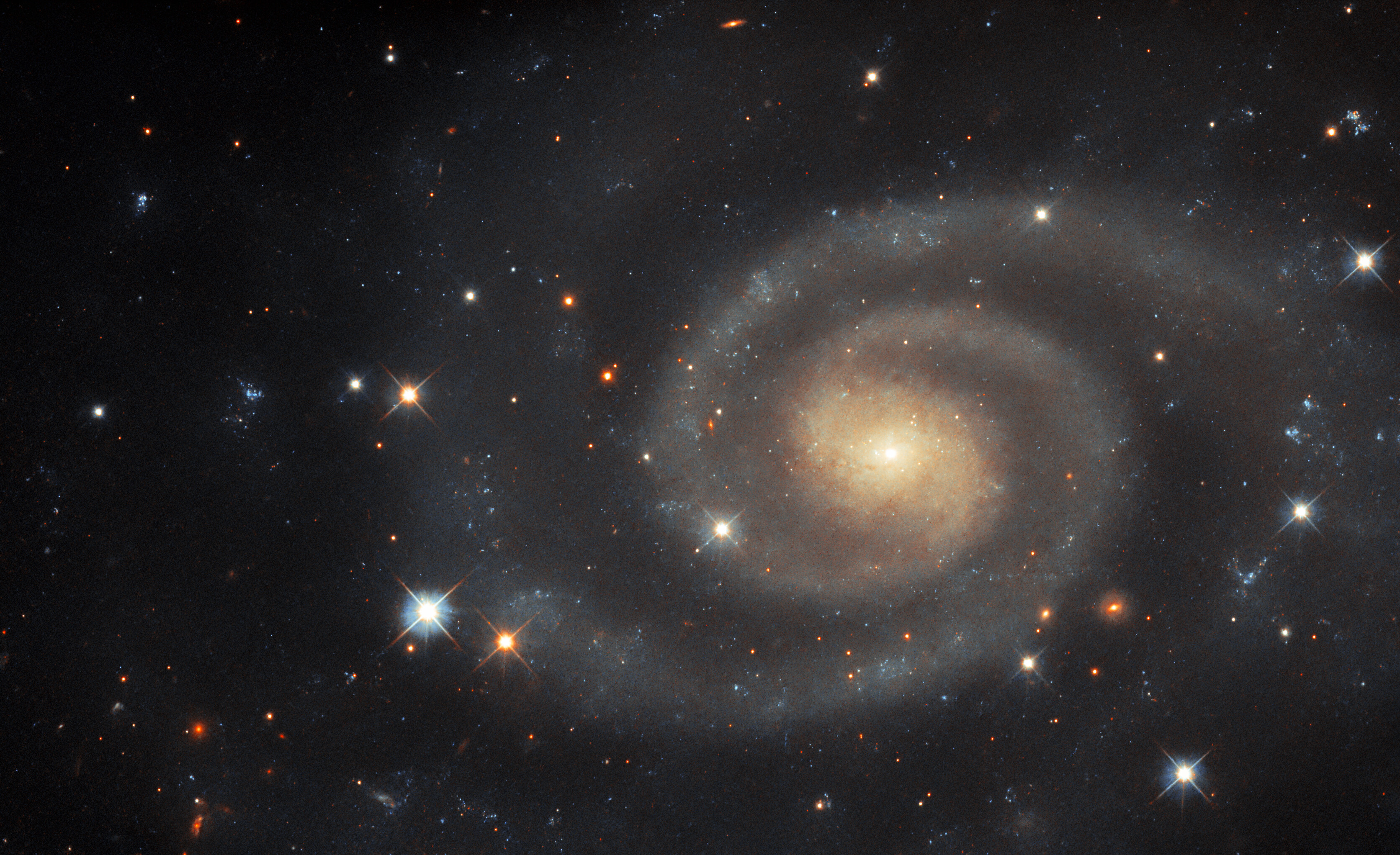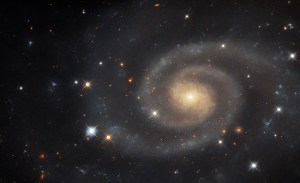
Hubble Views a Dim but Distinct Galaxy
This image of the softly luminous spiral galaxy UGC 11105 is from the NASA/ESA Hubble Space Telescope. It lies about 110 million light-years from Earth in the constellation Hercules. Astronomers have different ways of quantifying how bright celestial objects are. Apparent magnitude is one of those methods. It describes how bright an object appears to an observer on Earth, which is not the same thing as measuring how bright an object actually is; or its intrinsic brightness. Apparent magnitude depends heavily on an object’s proximity to Earth. To better understand how apparent magnitude works, consider streetlights; each lamppost is putting out the same amount of light, but the light that is closer to you is much brighter than one several blocks away. Although their intrinsic brightness is the same, their apparent brightness is different. UGC 11105 has an apparent magnitude, or brightness, of around 13.6 in the light our eyes are sensitive to, called visible or optical light. However, this image also holds ultraviolet data, allowing us to see wavelengths beyond those that the human eye can see. Because of its proximity and our perspective here on Earth, the Sun appears to be about 14 thousand trillion times brighter than UGC 11105, even though UGC 11105 is an entire galaxy. Hubble’s sensitivity and location above Earth’s light-distorting atmosphere allows the observatory to see extraordinarily dim objects in visible light, ultraviolet light, and a small portion of infrared light.
- X

























